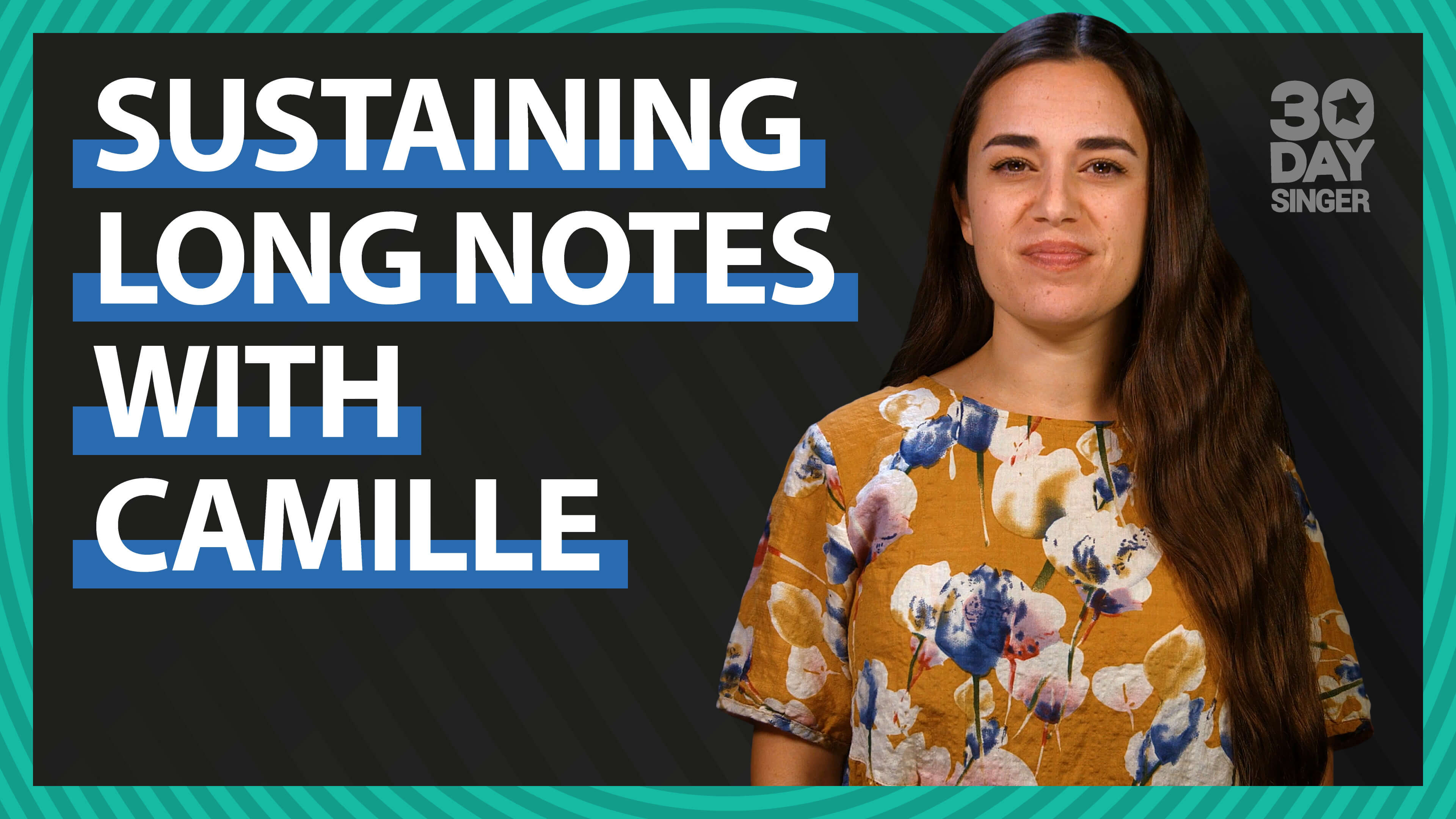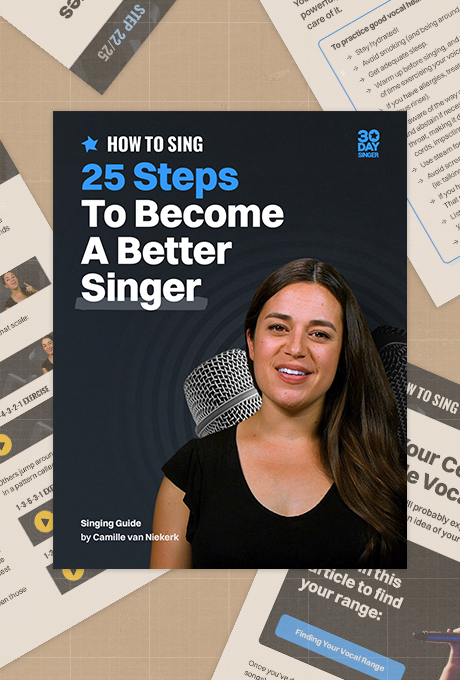Vocal Technique
Welcome to the Vocal Technique section of 30 Day Singer. These lessons focus on developing key singing techniques like vibrato, belting, singing higher or lower, breath control and much more. We offer guidance on how to learn these techniques and perfect them so you can perform with confidence. Some of these techniques are introduced in our beginner courses so if you need more time and focus on a particular area, these lessons come in very handy. You can bounce between these lessons freely or use a set combination of these lessons as part of your daily practice routine to monitor progress.
TUTORIALS
Singing Higher for Low Voices
By Abram PoliakoffThis lesson series is designed to help low voices expand their range and sing higher notes with confidence and ease. Instructor Abram Poliakoff guides you through five progressive parts, beginning with warm-ups and support connection, then exploring resonance placement and song-based “weight training” to condition your voice. Each lesson combines clear explanations with targeted exercises, culminating in a cool down to keep your voice healthy. By following this program, you’ll build the strength, placement, and flexibility needed to sing higher notes consistently while avoiding strain.
Power Belting for Low Voice
By Abram PoliakoffThis tutorial is designed to help lower voices unlock the intensity and energy of power belting while keeping their sound healthy and sustainable. Across five focused lessons, instructor Abram guides you step by step through the key elements of belting: building forward resonance with twang, sustaining high notes with proper support, and applying the technique in a full song performance. You’ll start with daily warm-ups to prepare your voice, then explore placement, breath control, and vocal balance to achieve a strong, brassy belt without strain. Finally, you’ll learn advanced tricks for sliding in and out of belt smoothly, giving you the confidence to use this powerful technique in musical theater, rock, pop, country, and more.
Easy Beginner Riffs and Runs
By Camille van NiekerkIn this lesson series, you will learn easy beginner riffs and runs, starting with simple 3-note riffs, then progressing to more advanced techniques like pulses and bends. The focus is on applying these techniques to the song Star Spangled Banner, making it easier for beginners to enhance their singing with riffs.
14-Day Range Extension Course With Camille
By Camille van NiekerkRange extension happens incrementally, in much the same way your hamstrings or hips become more flexible with consistent stretching. Consistency is how we both develop and then maintain a wide vocal range. In this course we’ll cover the key principles of range extension and learn specific exercise routines that will help you access your full vocal range.
14-Day Range Extension Course With Abram
By Abram PoliakoffIt can be a lot of fun to test the limits of your voice! In this course we will go over principles and a number of specific exercise routines that over time will gradually help you access your highest and lowest notes throughout your entire range.
Sustaining Long Notes For Lower Voices
By Abram PoliakoffSustaining a note is objectively more difficult than just hitting that same note. Join Abram in this three part lesson on sustaining long notes.
Singing With Richer Tone For Low Voices
By Abram PoliakoffSinging with a thin, small sound is common in beginning singers. Work with Abram in this lesson series and learn how to make a fuller and richer tone.
Sustaining Long Notes With Camille
By Camille van NiekerkSustaining a note is objectively more difficult than just hitting that same note. Join Camille as she teaches you the best tips and tricks to sustaining long notes.
Developing Each Vocal Register
By Camille van NiekerkWhether you’re just starting out or want a quick refresher, this lesson series is a quick crash course in developing each vocal register. Just the basics - but they’re very important basics to master.
Fixing Common Issues With Tone
By Camille van NiekerkDo you dislike the sound of your singing voice? If so, we promise you’re not alone! Join Camille for a lesson series: fixing common issues with tone.
Frequently Asked Questions
Some great vocal warmups for singers start with gentle humming or lip trills to relax and engage your vocal cords without straining them. Then, work through some scales to gradually increase your pitch range and get your voice fully warmed up.
For a quick 5 minutes vocal warm up, try some lip trills or gentle humming for a couple of minutes. It’s effective and quickly preps your vocal cords for singing or speaking without overdoing it.
When your voice is sick, keep singing warmups light and gentle—like humming or low, quiet scales. Also, drink lots of warm fluids and rest your voice as much as possible.
Start with some light humming, followed by a few pitch glides (from low to high sounds) to get your voice comfortable. Finish with a few tongue and lip trills to help with articulation.
Two good vocal warm ups are humming and lip trills. These are super effective and easy vocal warm-ups that gently activate your vocal cords without causing strain. Both are great for starting any vocal exercise.
Breathing exercises and resonance drills, like humming and vocal slides, improve the quality and projection of your speaking voice. They help develop control and clarity, making your voice sound more confident.
Hydrate regularly, practice breathing exercises, and do daily warm-ups. Consistency with these habits will help your voice sound smoother and stronger over time.
To strengthen a weak speaking voice, practice deep breathing and speak from your diaphragm to add power. Also, try projection exercises like speaking in front of a mirror to boost confidence and clarity.
Focus on articulation exercises, like tongue twisters, and practice controlling your breath to avoid running out mid-sentence. Over time, these will improve clarity and help you speak with ease.
The four vocal function exercises are sustained phonation (holding a sound steadily), pitch glides (sliding between notes), lip trills, and staccato sounds on different pitches. They work together to strengthen and balance your vocal cords.












